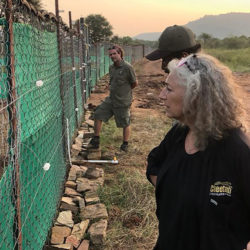Snakes, Snakes and More Snakes
-

- by CCF Staff May 12, 2020
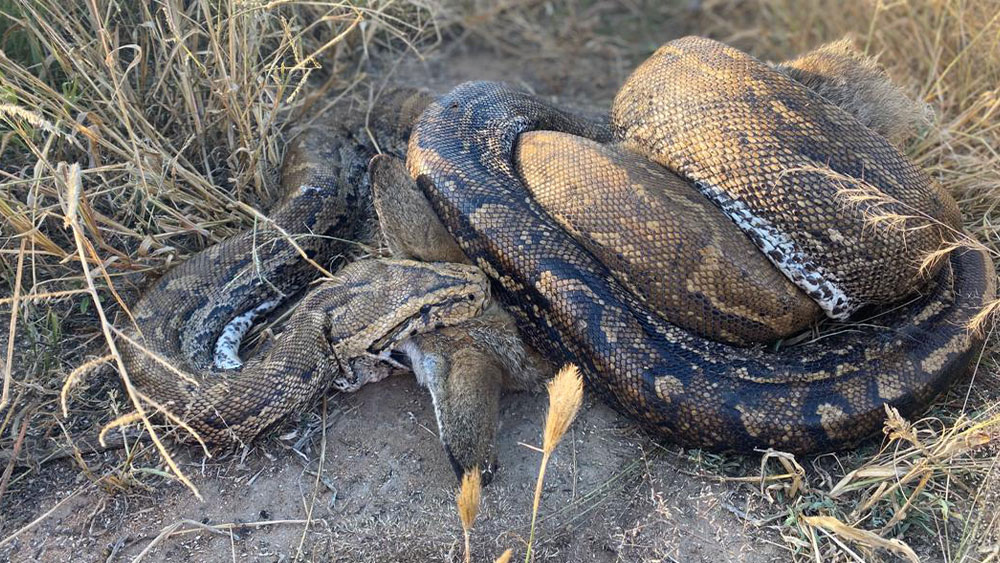
Namibia has 81 species of snakes and only 16 represent a danger to humans. But they, and other reptiles, are under threat from humans. Snakes are a vital part of Namibia’s ecosystem as they eat small mammals like rodents. CCF’s main goal in education is to help people understand the important role predators play in the ecosystem. Through better understanding people can successfully live alongside predators, including the scaly and venomous ones. When we get venomous visitors, we catch and relocate them far away from our Centre.
Zebra Cobra
Dr. Bruce Brewer gets a medal for his years of tirelessly relocating snakes. Dr. Brewer estimates he has relocated an average of two snakes per year for the past 20 years. In earlier years (the house is built in a zebra snake movement area) he caught more. Hercules alerted Drs. Brewer and Marker to the big zebra cobra seen in the video below. The door was open, but the snake did not enter their office. The snake was caught and released at the end of CCF’s airstrip.
Below is another beautiful zebra snake at CCF’s Headquarters caught by Community Development Manager, Nadja LeRoux (note the challenging size of her bucket). The tail was the only accessible part of the snake as it was hiding in a hole, hence the snake couldn’t be caught elsewhere.
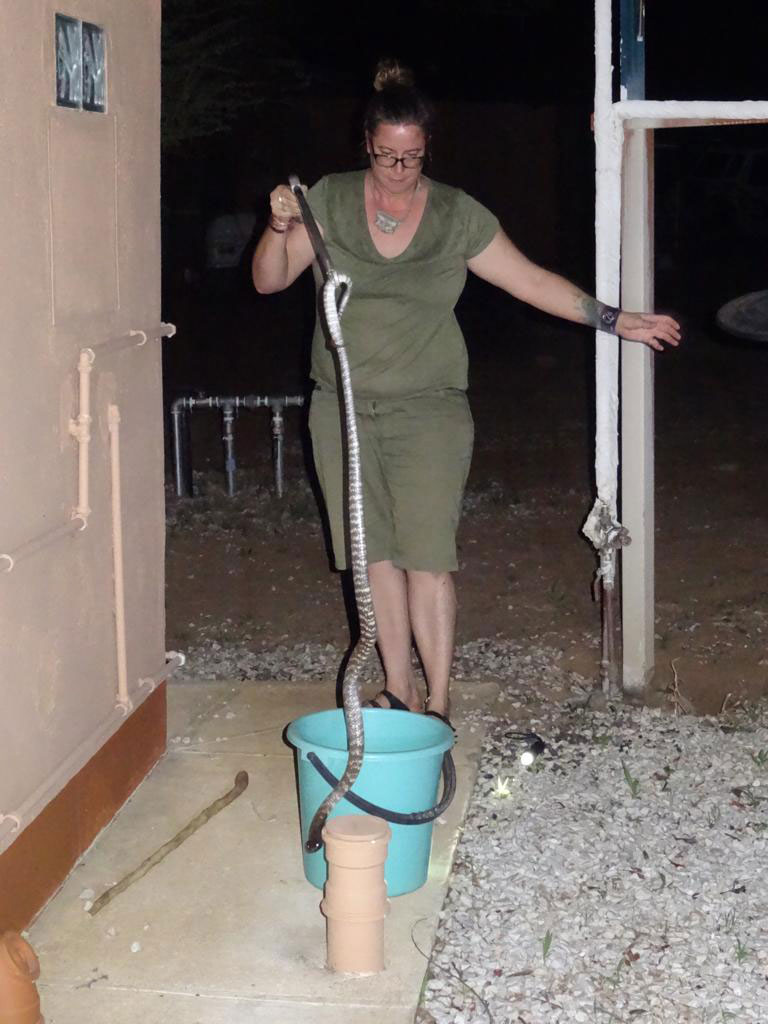
As it was after dark when it was caught, the snake was relocated away from the Centre the following morning with the use of a makeshift shield.
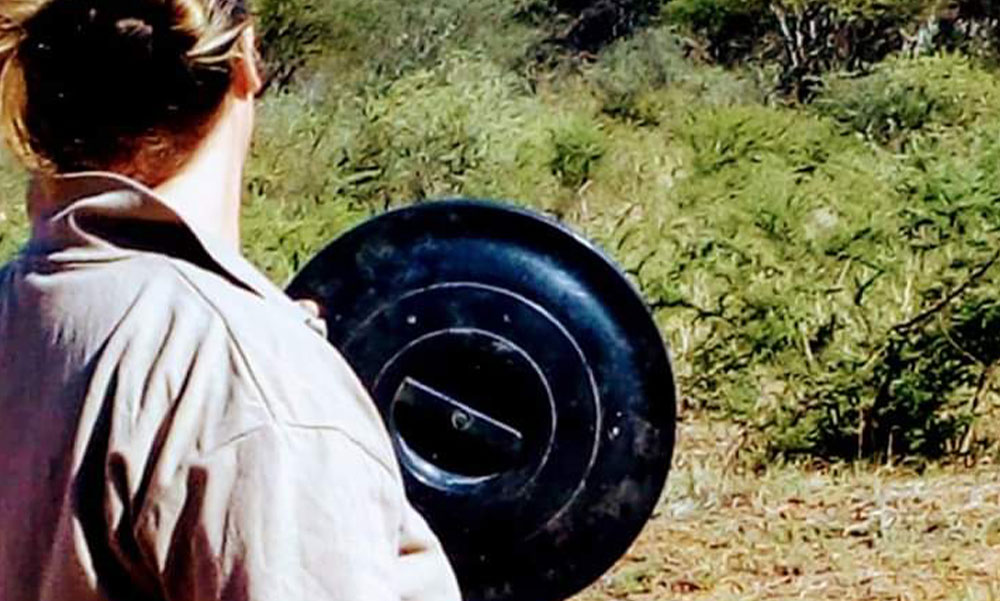
Puff Adder
The human/wildlife conflict field team removed a puff adder from a homestead. These snakes, similar to rattlesnakes, have a potent cytotoxic. They relocated the snake to a safe area, far from homesteads. This particular snake had a beautiful distinct tan color, and shows off its camouflage.

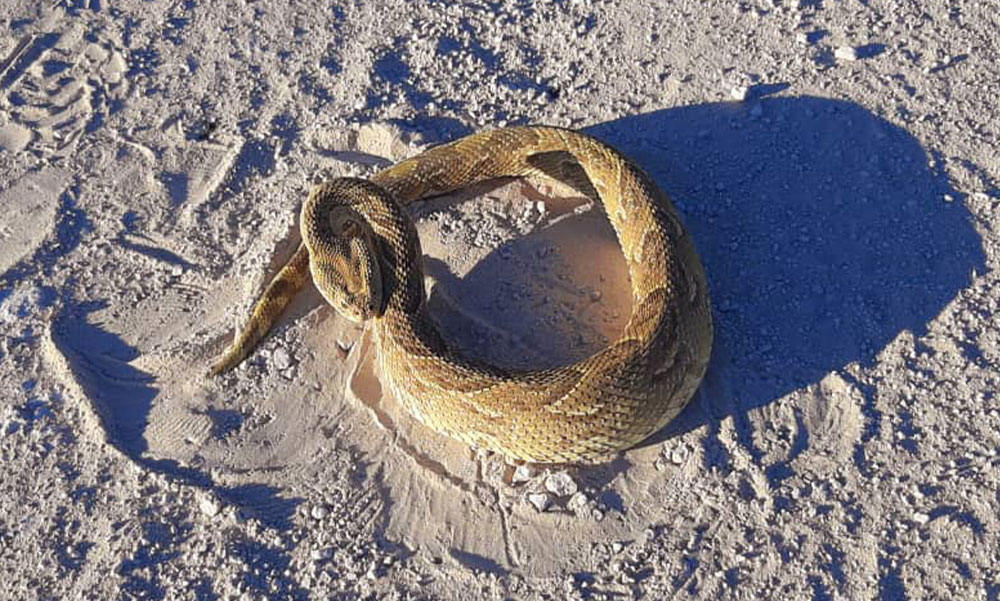
We also had a nice sized puff adder at CCF and Assistant Farm Manager, Paul Visser, did an great job catching it with a mop. We had to use whatever was available on-hand as the snake tongs were in use elsewhere. He knew the snake would only be able to strike if he allowed it to recoil.

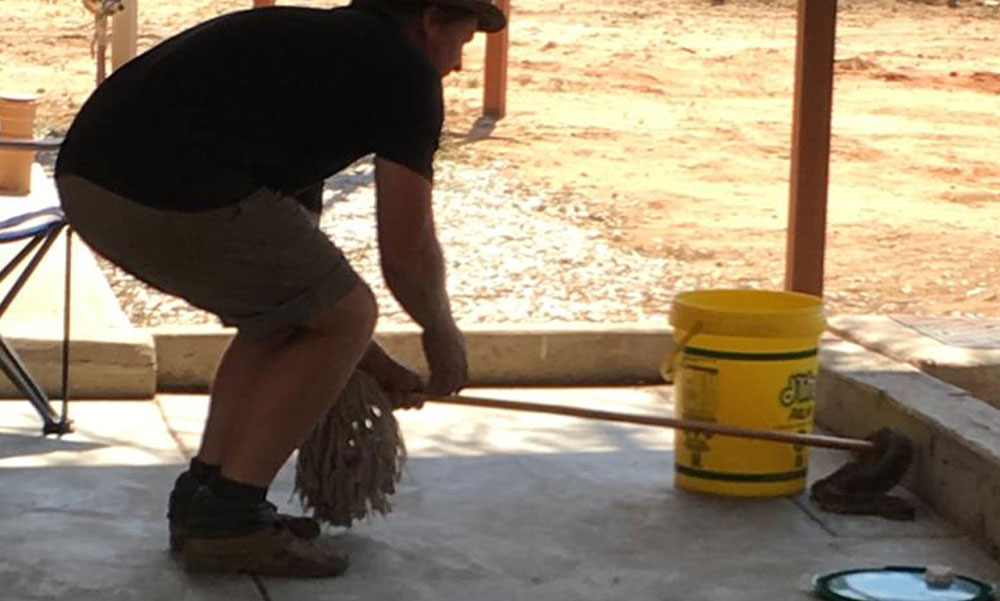
Tiger Snake
Our Business Manager Annemarie had a nice (and special) surprise in her veggie garden… a tiger snake! This species is nocturnal and mostly arboreal (they prefer trees). They feed on rodents, lizards and bats are a preference. They have an extremely mild venom that has no effect on people, and are also a constrictor. Absolutely stunning snake with beautiful skin patterns. Annemarie is not a fan of snakes but recognizes their importance in the ecosystem. Though this snake species poses little danger to people, for her own peace of mind, she delicately moved the snake with a pair of flat braai (BBQ) tongs and we relocated it far away from her house.
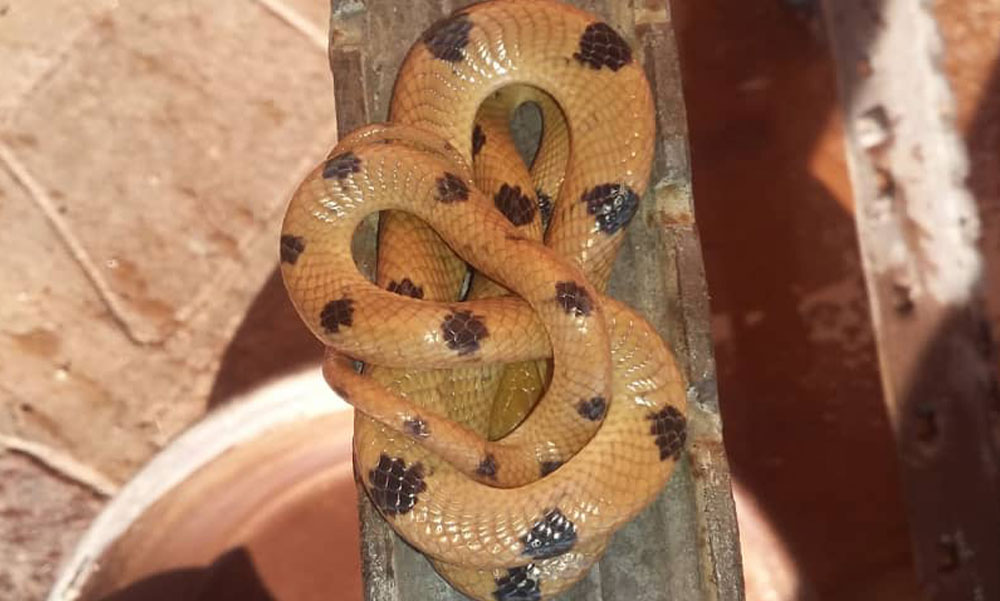
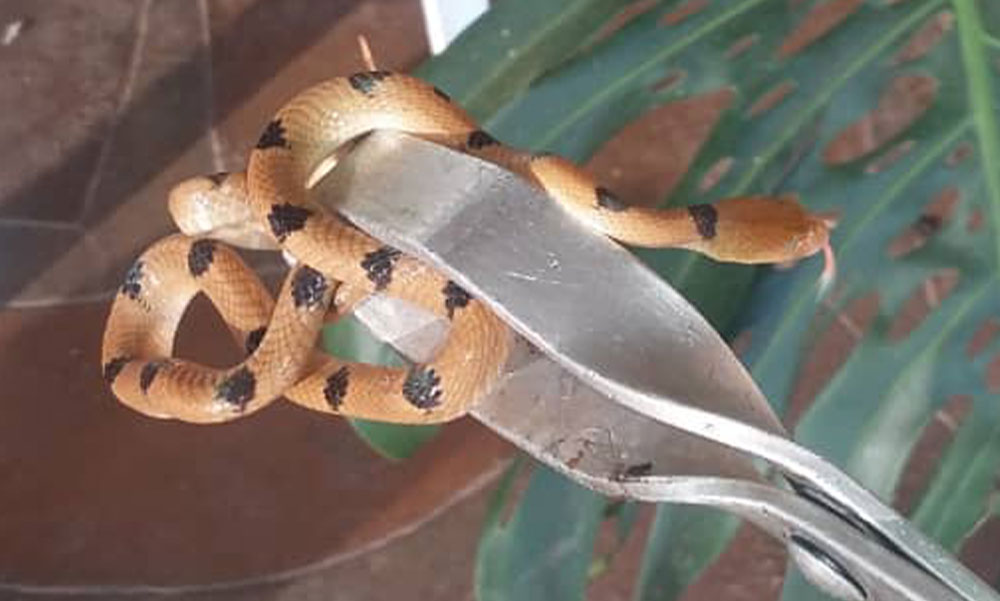
African Rock Python
CCF’s Livestock Guarding Dog and Small Stock Manager, Calum O’Flaherty, was coming to work when he was stopped by one of the herders who works at our Bynadaar farm (a location away from our main centre where we keep our bucks and rams). The herder told Calum that there was a huge snake near the farm house and they were worried it would take one of the goats. Once Calum had finished doing the morning husbandry for the dogs and goats at the main centre. When he arrived he found a 3 to 4 meter African rock python eating a bat eared fox. The people who lived there said they had heard something early in the morning and that’s how they found the snake. Calum was able to intervene and help by telling them it was a non-venomous species and that this meal would keep the snake fed for two weeks to one month. It is very unlikely that it would be able to take a goat. Calum advised them to give the snake some space and it would move along once it was finished and it did.
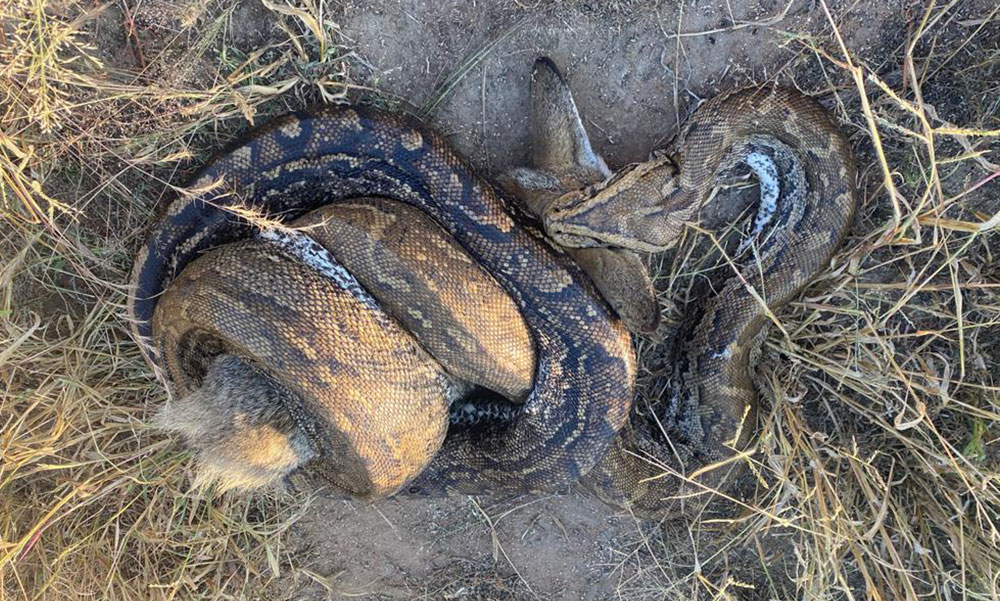
Spotted Bush Snake
This spotted bush snake (non-venomous) was found in the clinic and Calum got a panicked call by our vet interns. He came running prepared with the snake tongs and a bucket. We shepherded the snake out of the clinic and it went round to where the food bowls are cleaned for the cheetahs and hid behind a shelf. Tim Hoffmann, CCF’s Scat Dog Handler arrived to help and the two managed to coax the snake out long enough for Calum to catch him and put him in the bucket. They then took the snake out to the reserve and released.
Related Reading
-
April 3, 2023
Clearing the Land for Cheetahs -
October 4, 2022
Veterinary Work at CCF Needs Your Support -
August 11, 2022
Memorial for Jane Katjavivi


